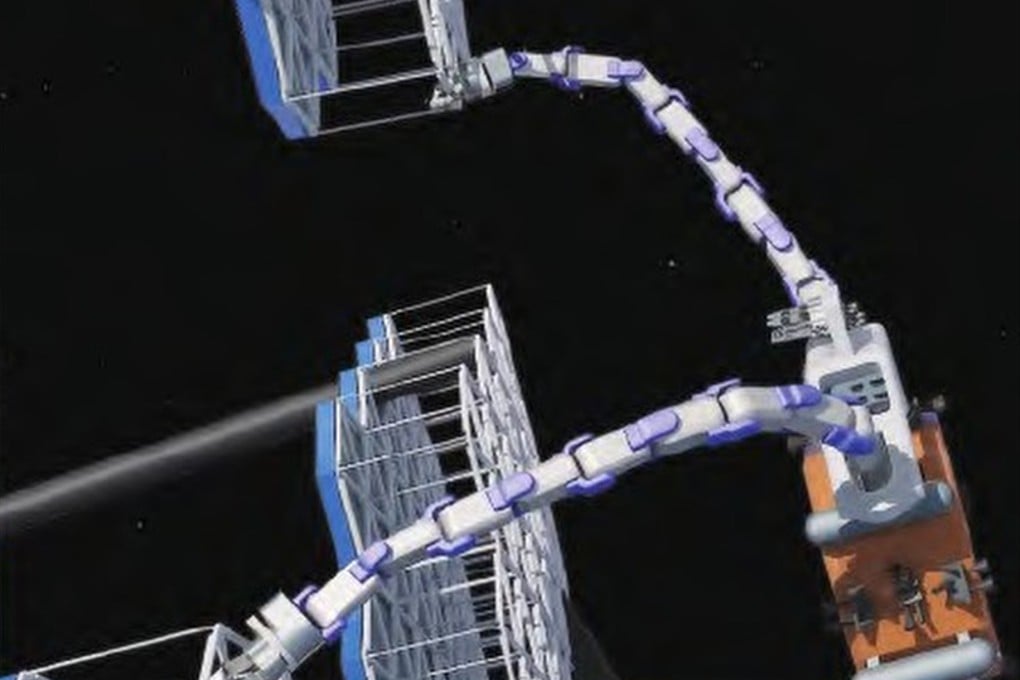China’s snake-like robot designed to move or manipulate a large object in space, according to paper
- Researchers say their serpentine attachment – with each segment an independent robot – can get into tight corners for in-orbit repairs
- The robotic tentacle could crush a small satellite like ‘a python strangles its prey’ but that China does not plan to use it as a weapon, says observer

The 1.5-metre (5-foot) long robot, which attaches to a spacecraft, consists of nine segments, each capable of generating a torque of 190 Newton-metres – nearly double that produced by a 1,200cc Harley-Davidson Iron motorcycle.
The joints between segments can twist and rotate extensively, allowing the robot to snake through a complex environment to reach a narrow corner of a space station or satellite that is inaccessible to astronauts or robotic arms at present, according to the researchers.

A damaged or malfunctioning segment of the robot can be removed or replaced with a new one, allowing it to be in service for an unlimited time, in theory.
“Making repairs in a complex space environment costs a great deal of human and material resources. The modular hyper-redundant manipulator is an effective solution to this problem,” said the team led by Professor Xu Zhenbang, of the key laboratory for on-orbit manufacturing and integration for space optics system at Changchun Institute of Optics, Fine Mechanics and Physics in a paper published in the domestic peer-reviewed journal Robot last month.
The robots could also work together as tentacles to move or manipulate a large object, Xu and his colleagues said.